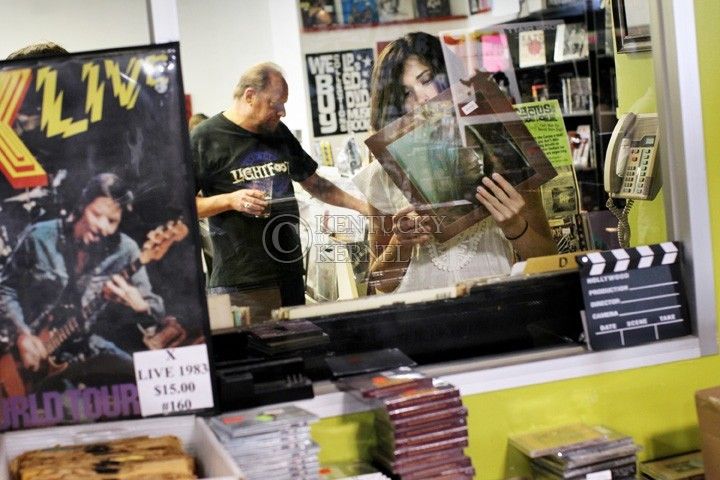Evolving technology changes the culture of modern music
Cactus Music in Houston, Texas, is the place to find everything from hip-hop to Tejano, Jimi Hendrix posters and musically themed lunchboxes, as well as regularly-scheduled free live in-store music events. (Courtney Perry/Dallas Morning News/MCT)
March 30, 2010
Remember aimlessly thumbing your way through the shelves of your local record store as some obscure artist found his or her way from the stereo on the cashier’s desk and into your ears? Probably not, and if you do, it’s probably been a while.
What about scrolling your way through the iTunes music store listening to 30-second samples of music in the comfort of your own home? Chances are the latter option is a great deal more likely than the former.
The changes in the music industry have rippled out further than the industry itself — it’s changing the culture of music.
The beginning of the music industry’s decline can be traced back to the turn of the millennium when Napster blazed the trail of illegal piracy that would follow in its wake.
The music industry, much like the journalism industry, is not dying, but merely changing. There is still money to be made from music. Artists still sell out arenas, and records still go multi-platinum (albeit not to the degree they once did).
However, as a result of the public’s accessibility to music, record companies are forced to lessen the amount of acts they can sign onto their label, consequently shrinking the number of bands they can expose to audiences.
But these bands are now able to gain exposure for themselves. The Internet and it’s social networking services such as Twitter, Facebook and Myspace give artists the means to ensure that if they want to be heard, they can be.
The simple truth is that the days of tangible media are fading. Camera film has been rendered obsolete by compact flash cards, while millions of books can be read from a single Kindle device. Netflix lets us stream movies straight to our TVs, and has almost single-handedly put Blockbuster out of business. The CD racks that once outdated record players are now just as archaic as their predecessor thanks to MP3 players that can hold more than a thousand albums in their little half-pound frames.
While these products certainly offer a level of relative ease to users, what is missing is interaction — face-to-face conversation with a stranger about their favorite records, or the best concerts they’ve ever seen. Social tendencies have pervaded a generation that texts one another to make plans and uses the Internet as a means to avoid leaving the house whenever possible.
Assuming we can adapt from these setbacks, the changes that face the music industry don’t need to be unfortunate ones.
While the days of reading the linear notes of an album are gone, those same journalists and writers are in fact more accessible thanks to the Internet. Is it really unfortunate that instead of reading a small write-up about an artist in the sleeve of their CD case, you can instead get that same writer’s up-to-the-minute music recommendations and thoughts from his tweets?
It’s time to put nostalgia aside. As Bob Dylan wrote, “The times they are a changin.’ ” There’s no need to resist — they’re changing whether we want them to or not.






























































































































































